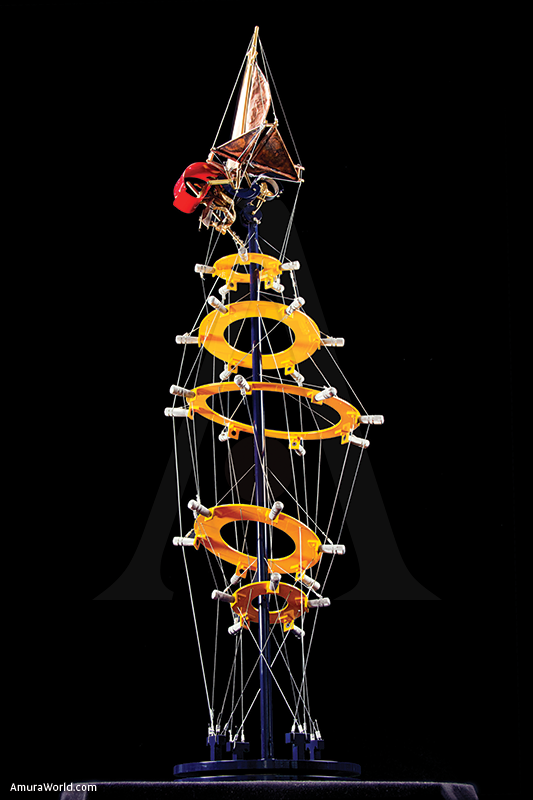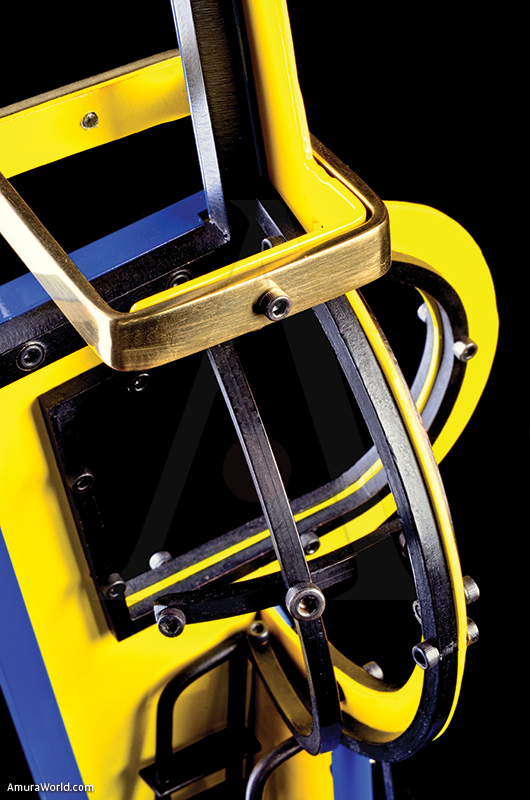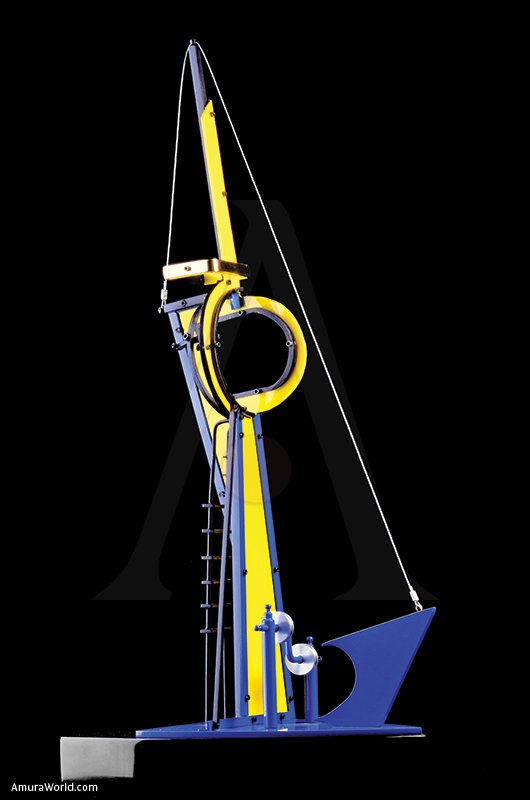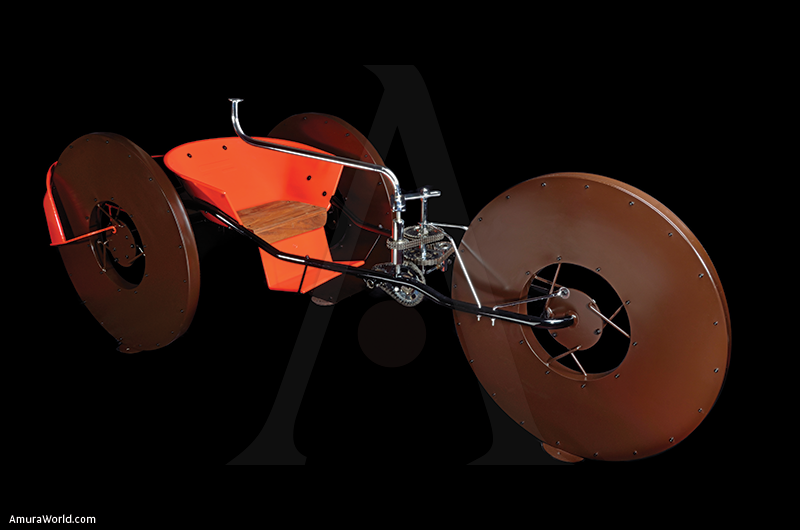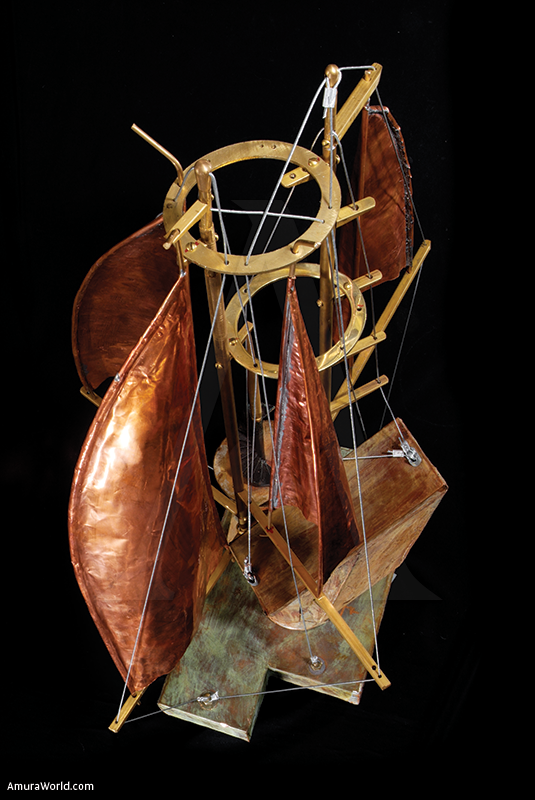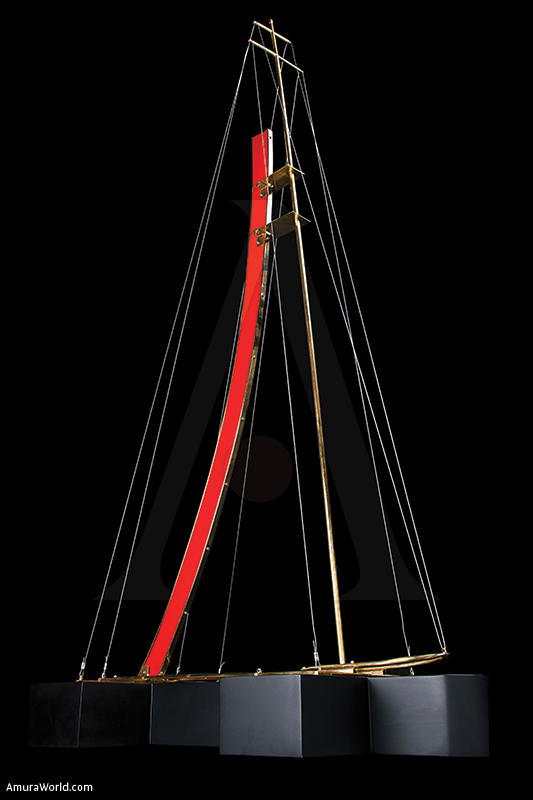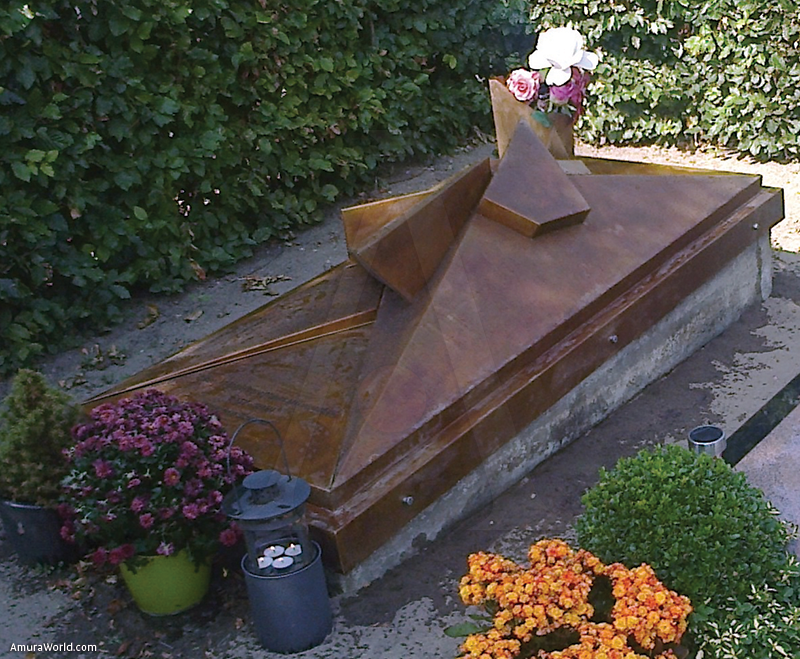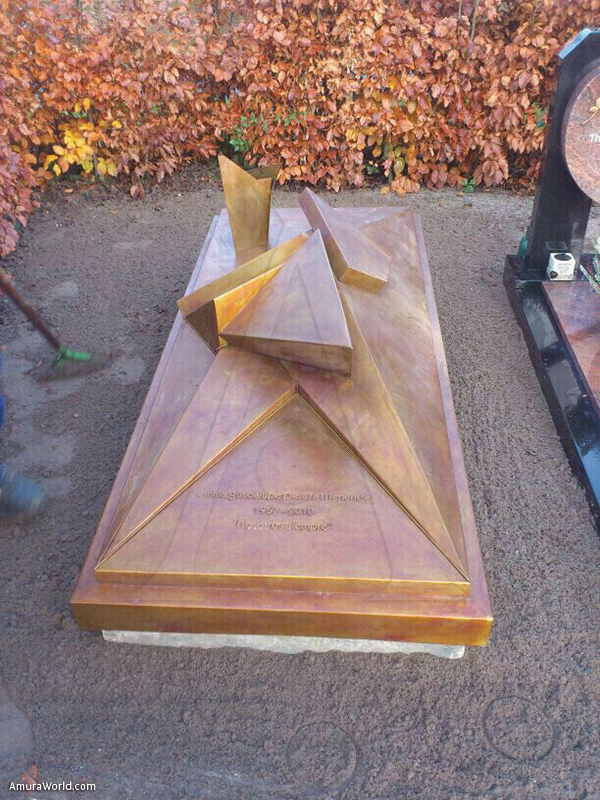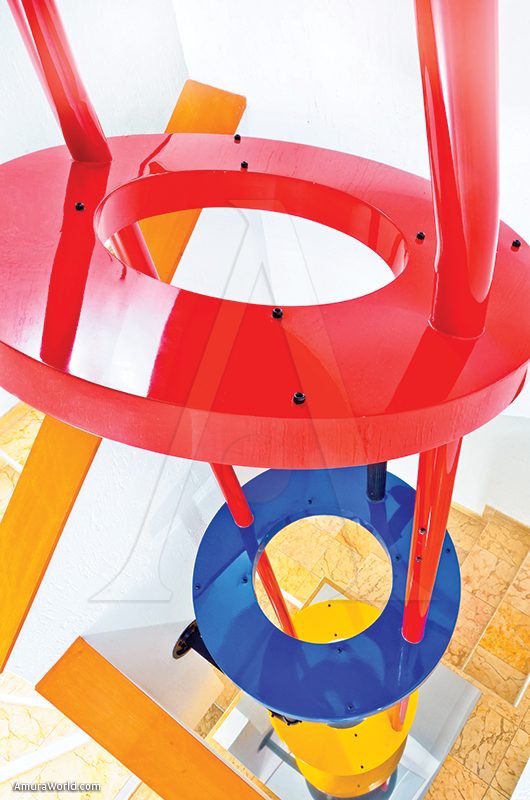Empty Spaces,forms and ports of destinations in the most recent work of Miguel Peraza
The most recent work of Miguel Peraza drags us through the currents that make the essence of the voyager stand out. The sensibility o f his work contains a poetic navigation. In the possibilities that the third dimension allows, he experiments with the materials and explores through volumetric form with minimum elements, essential concepts - inherent to the being.
Peraza offers a journey log through distant horizons. He invites the element of surprise with the human whitt, which, by building genius vessels, has been capable to throw itself to the empty oceans; to the empty space to approach and conquer wild new horizons, because there is not more attractive destination than that we have never known .
Inspired by the discoverers of all time, the artist plays with materials, the calculation and the spaces, gaps and ways to build your own Time Machine in the same style as Wells. Children living in the desert of Baja Sur, travel through time, giving his first forays a proper imaginary sense.
Since childhood, this sculptor sailed on the voyage of a playful artistic expression and has continued to experience in the construction of ships. With its sailors Peraza’s time and space has made a race across the globe , leaving in each port an invitation to expand the soul through aesthetic dialogue.
In 2011 sails unfurled on the dock with a Wave (2008 ) from Abu Dhabi, to find destination port in Mexico City. In temporary exhibition tied Wind Miracle ( 2005 ) in the American House of Catalonia , which is currently traveling to it’s final destination in the estuaries of Galicia.
It is a series of studies related to the rudders, navigation instruments, astronomy, wind, strength and hope. The art of moving towards in new creative dimensions.
His latest monumental work conducted for the Institute of Geography of the National Autonomous University of Mexico in its 70th anniversary is the Navigator (2013) which is the origin of the seed. It is a mathematically complex work containing the golden ratio in different dimensions and placed in the same position of Pakal, the navigator of the Mayan cosmos.
In the exploratory process, the artist has been captivated by the infinite possibilities of abstraction and its multiple expressions. The study of the stars has also added geometry. He assumes that contemporary spaces require inspired motifs in order to help us perform our tasks contributing to our reflections. With that intention Inside the Mirror (2007), Tec de Monterrey, Campus Queretaro , he suggests a ride that allows to move on and to use work as a dock for the spirit.
It is through geometric shapes in which surfers are able to move. Establishing benchmarks which manage to transcend the exploration and itineraries. In the investigation of the forms, the artist stumbled upon a seed of hard crust and a helix in the German black forest.
Following the journey of the imagination realized by a movement that can shoot in any direction - toward the ground or into space - taking the information needed, in essence, a kind of nature reserve. In gratitude, Peraza creates Return Seed (2013) as a comeback to the path of the cosmos.
Sensitive Historical facts are felt by the Leiderdorp people from the Netherlands in the first expression of lapidary art that evokes a navigation star, recumbent beside the beech hedge. We always (2011) is dedicated to his beloved sister Emma (1957-2010) .
In an effort to continue moving through the deployment volumetric Peraza’s format ventures into a new dialogue with intimate architecture. Inland of Life ( 2013 ) is a monumental sculpture installed in the heart of a family home. Through cycles or circles, narrates the meeting of two cosmic being who intertwine to create the phenomenon of cell reproduction which we call children.
With 38 years of artistic trajectory, Miguel Peraza has carved his signature interlaced with elite class Mexican global artists. His most significant public is located in educational institutions, which is why he is well known as a sculptor in universities, although the work transcends the walls into public spaces and even kindergartens.
His most recent work, which has been unveiled has a longitud three meters, and is called Saetas Space (2013) designed to mark the 30th anniversary of the Ameyalli City Collage in Mexico. It is an instrument to catch stars, comets or other constellations of the universe, imaginary places for the time being, but soon, will be explored and inhabited by new generations.
Text: Miguel Peráza ± Photo: León Felipe Chargoy / Eduardo Olavarri Orozco / Olivier Van Hoore

